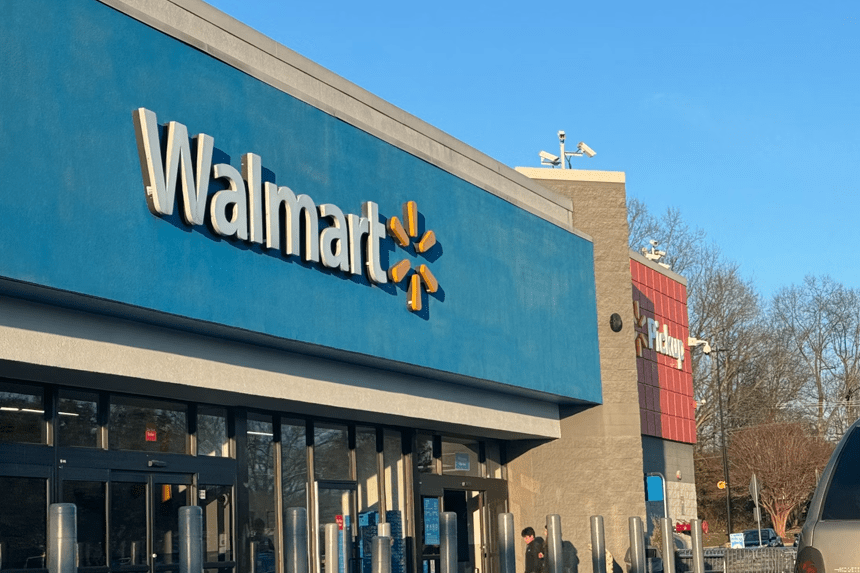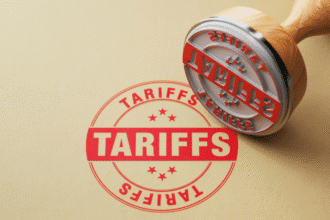Walmart is getting ready for a massive tariff fee growth that could impact the prices of many merchandise throughout its stores as new import tariffs take effect in 2025. This development stems from the latest changes in regulations added via the US authorities, aimed at defensive home industries, however,,r leading to better charges for stores. Understanding what this Walmart tariff rate increase manner will assist consumers in expecting changes in pricing and make knowledgeable choices approximately their purchases.
- Why Is Walmart Implementing a Tariff Price Increase Now?
- When Will Consumers Begin to Notice the Walmart Tariff Price Increase?
- How Will the Walmart Tariff Price Increase Affect Consumer Spending and the Economy?
- What Does the Walmart Tariff Price Increase Mean for Walmart’s Financial Performance?
- How Can Consumers Prepare for the Walmart Tariff Price Increase?
- What Are the Long-Term Implications of the Walmart Tariff Price Increase?
- Conclusion
Why Is Walmart Implementing a Tariff Price Increase Now?
The upcoming Walmart tariff charge boom is an immediate result of tariffs imposed on imported items under the cutting-edge US trade guidelines. These tariffs typically impose a 10% charge on many imported products, even as items from China face even steeper price lists of 30% or more. Walmart’s CEO, Doug McMillon, has publicly stated that at the same time as the business enterprise strives to hold prices low, the value of these price lists makes it impossible to absorb the extra charges. In this manner that some of the elevated expenses will have to be passed on to clients.
Although more than two-thirds of Walmart’s US products are locally produced, certain product classes, which include electronics, toys, and garments, remain relatively dependent on imports, particularly from China. These categories will consequently be most stricken by the Walmart tariff charge boom. In addition, price lists on goods from other countries like Costa Rica, Colombia, and Peru—supplying staples which include bananas, avocados, coffee, and plant life—additionally contribute to rising expenses throughout a greater diversity of gadgets.
When Will Consumers Begin to Notice the Walmart Tariff Price Increase?
According to Walmart’s chief financial officer, John David Rainey, consumers may want to begin seeing the results of the Walmart tariff rate growth as early as this month, with greater substantial charge changes anticipated with the aid of June. This timeline reflects Walmart’s technique of adjusting charges to account for the accelerated fees from tariffs.
This fashion isn’t always isolated to the US. Canadian outlets are also getting ready for similar price increases in reaction to price lists imposed as retaliation for the US’s change in policies. For instance, major Canadian store Loblaw’s has warned clients of a “big wave of tariff-associated increases” on the horizon. This shows that consumers in the course of North America will quickly revel in growing fees due to exchange tensions. Read another article on Amazon: Trump Tariff Clash
How Will the Walmart Tariff Price Increase Affect Consumer Spending and the Economy?
Consumer spending makes up more or less two-thirds of the USA economy, so any sustained price increases from the Walmart tariff fee growth could have broad economic implications. Walmart executives have emphasised efforts to minimize price hikes on vital food items, recognizing that purchasers are especially sensitive to changes in food prices. However, the business enterprise is likewise equipped to adjust shopping techniques if buyers begin to resist higher fees, aiming to keep income volumes regardless of the demanding situations.
Despite the multiplied expenses, Walmart remains assured it may navigate those pressures without changing its lengthy-time period commercial enterprise method. Executives have reassured investors that the organisation expects to preserve growing profits faster than sales, signaling an ability to skip some of the tariff-associated expenses onto customers while retaining standard financial health.
What Does the Walmart Tariff Price Increase Mean for Walmart’s Financial Performance?
The uncertainty surrounding change rules has led Walmart to withhold short-term earnings guidance. Nonetheless, the company remains devoted to assembly its annual financial goals. Recent income facts reflect Walmart’s resilience regardless of tariff-driven value pressures. After a gradual February attributed to negative weather, the retailer suggested a 2. Five % growth in sales year-over-year from February through April, totaling $165.6 billion. However, earnings declined by 12% to $ 4.4 billion at some stage in the same period, reflecting the challenge of absorbing better charges while sustaining growth.
How Walmart manages the continued Walmart tariff fee increase could be an important indicator of its economic fitness within the coming quarters. The enterprise’s ability to balance expanded charges with consumer call for will play a key position in its persevered achievement.
How Can Consumers Prepare for the Walmart Tariff Price Increase?
Consumers can take numerous steps to prepare for the outcomes of the Walmart tariff rate increase. Products heavily dependent on imports, especially electronics, toys, and apparel, are probably experiencing the largest rate will increase. Planning purchases of time might also help customers avoid paying higher fees later. Additionally, even as Walmart is making efforts to maintain food prices strong, a few will increases are inevitable, so stocking up on staple items quicker in place of later may provide some savings.
Staying knowledgeable approximately ongoing tariff trends will assist clients count on future charge modifications. Budgeting for extended fees in both groceries and retail purchases can also be essential in managing family costs. In some cases, customers may recollect alternatives consisting of local merchandise or exclusive manufacturers to mitigate the effect of rising charges.
What Are the Long-Term Implications of the Walmart Tariff Price Increase?
The on-the-spot focus is on price changes in 2025, but the lengthy-time period consequences of price lists may additionally reshape retail deliver chains for years to come. Walmart and different outlets ought to increase shift sourcing in the direction of domestic suppliers or diversify their supply chains to reduce dependence on countries going through excessive price lists.
Consumers should anticipate a duration of persistent adjustment, with fee fluctuations viable as change members of the family evolve. The Walmart tariff rate boom is part of a broader trend impacting how items circulate globally and how prices are allocated during the supply chain.
Conclusion
The Walmart tariff charge growth is a massive improvement that displays broader alternative policy shifts affecting each outlet and client. Shoppers have to prepare for growing fees on many imported goods starting now and continuing by the point of 2025. By understanding the reasons and outcomes of those price lists, purchasers can take proactive steps to control their budgets and purchasing behavior.
Walmart’s efforts to stability cost pressures with competitive pricing can be essential in shaping the shopping enjoy over the coming months. Staying informed and proactive will assist clients navigate those changes effectively and minimize the financial impact of the tariff rate increases.








